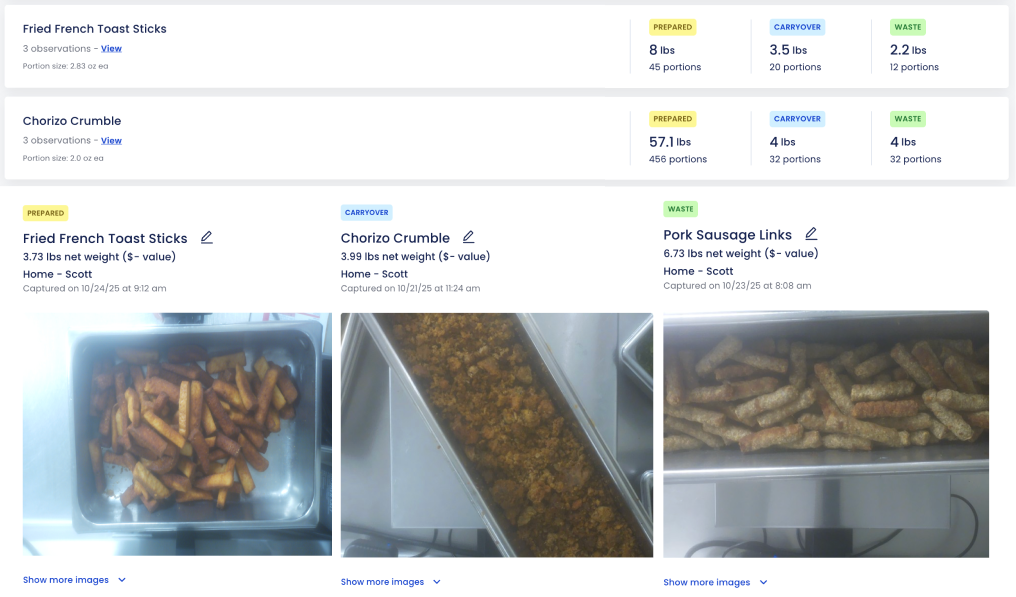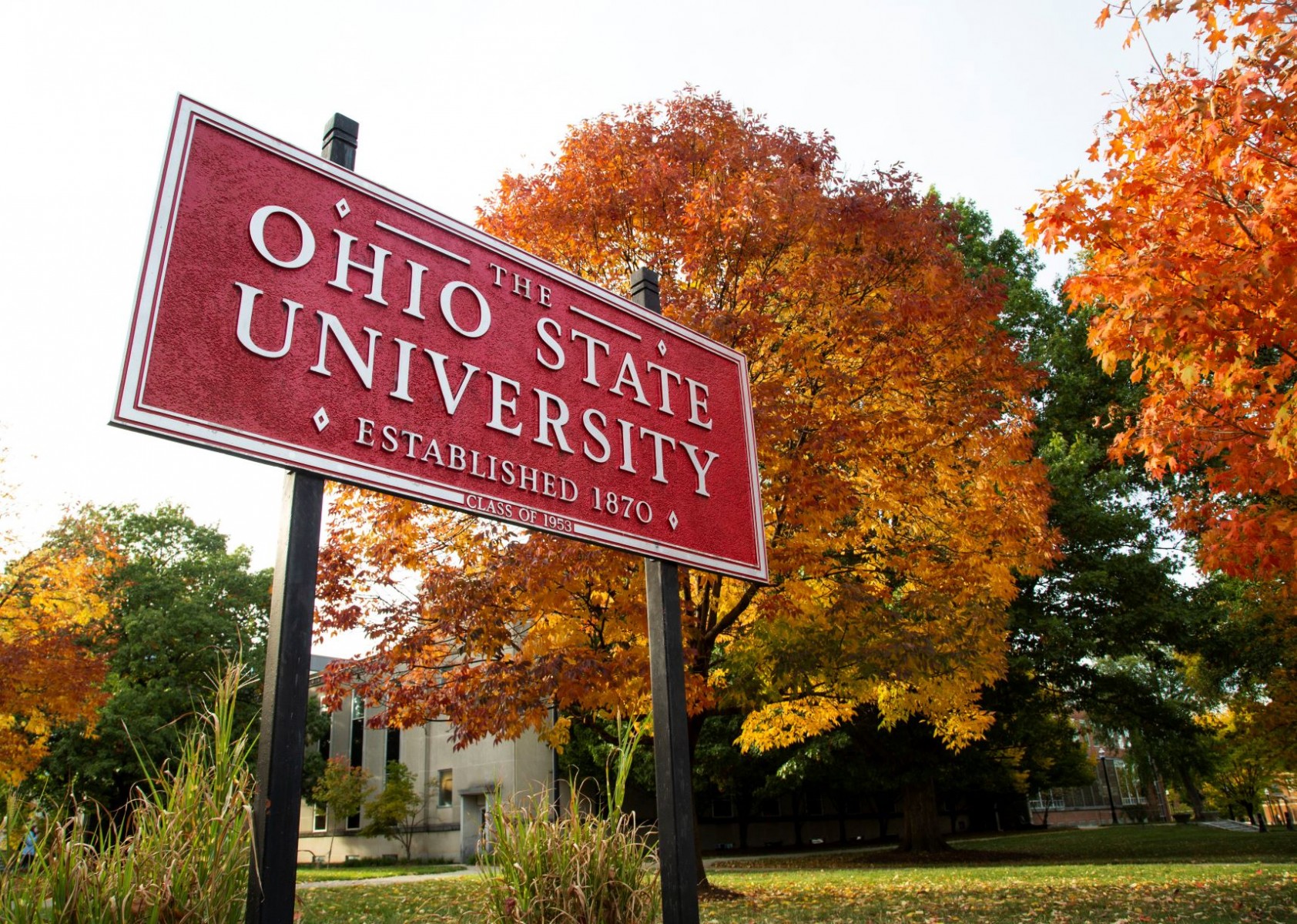Key Results
In (just over) a year of regular StreamLine system use, OSU dining achieved:
- 31% reduction in food waste
- $95K est. food cost savings
- 95 tons of food waste recorded
Program Overview
Ohio State University (OSU) is a public university in Columbus with almost 47K undergraduate and graduate students. The OSU dining team has many mouths to feed, and services 40 dining locations (both retail and residential venues) across campus. Because of the dining program’s scope and scale, any new kitchen solutions must be easy to use—with their volume, there’s no room for disruption.
In 2023, OSU Dining was one of the first campuses to launch ReusePass, our reusable container program. Within their first year, they saved $82K on single-use packaging and maintained a ~99% container return rate. As ReusePass became ingrained in student dining, we started to spend more time learning about the OSU Dining’s challenges earlier in the service cycle.
Ohio State Dining's Production Pain Points
OSU Dining leaders and chefs wanted an easy way to see—and reduce—food waste in their kitchens.
Teams were starting to track food waste in mid-size kitchens with a homegrown solution that relied on QR code menus, manual food identification, and spreadsheets. This covered most of the core data needed, but the system wasn’t scalable enough; the team was also supporting a transition to the Jamix menu management system and didn’t have time to manually record waste data and add post-service results to Jamix.
Chefs and operators were aware of tracking inconsistencies and didn’t fully trust the data they received. They needed a smoother way to get quality service results and prevent ongoing, costly overproduction.
Enter StreamLine: Production Clarity, without Friction
In July ‘24, Ohio State University started using StreamLine, our prep-to-post-service data capture system, in one residential and one retail location. The residential venue—Tradition Dining—dishes up thousands of meals daily and is the highest-volume dining hall on campus.
Capturing data with StreamLine is fast and intuitive, even during the busiest shifts.
- Capture: Staff place a tray of prepared, carryover, or wasted food on the countertop smart scale and tap the touchscreen once to record an observation, which includes a photo of the tray. At first, OSU was only using StreamLine to track food waste.
- Analyze: AI matches each entry to the right Jamix menu item (or ingredient), translating raw data into clear, actionable insights.
- Act: Service results are automatically added back into Jamix for seamless reporting and planning. Results are also summarized in the StreamLine dashboard and presented in actionable email reports.
.jpg)
Per Annette Misenko, the Assistant Director of Tradition Dining at Ohio State,
“Our team cannot say enough wonderful things about our new Streamline program and our partners at Topanga! It is 5 stars out of 5! Leading a two story all you care to eat facility with 100 full-time staff we needed to be able to track waste in an efficient manner. Streamline's use of AI technology allows our team to easily weigh any leftovers [and get] a quick photo image. Linking Streamline to our ordering software allowed a dollar amount to be given to our waste management tracking.”
New Kitchen Tricks, Same Teams
In the months following StreamLine’s rollout, we worked closely with OSU Dining to ensure all team members were comfortable recording trays of food waste. Once that became a habit, we introduced reporting that showed the most wasted (and highest cost) items. These reports reflected the nuances of their residential operations; the main dining venue is split across two levels and has multiple stations—like the salad bar, grill, and Mongolian menu—that may all serve grilled chicken. When weighing a tray of grilled chicken, team members can select which station it came from, helping chefs see exactly where to make adjustments.
Annette noted that “The reporting feature also allows us to communicate data at every level of our organization...there are actionable visuals for us to tweak both production and what was fired on the line. Streamline has become a critical part of our all you care to eat facility.”
Using StreamLine’s early insights, chefs adjusted forecasts for items with routine waste like scrambled eggs and breadsticks (mac & cheese waste, for example, was reduced 48%). Day-to-day decisions—like when to fire up a new batch of fries and when to hold—are increasingly driven by actual data, disrupting behavior that creates waste.
Ohio State Dining's Production Evolution
StreamLine is now used in seven OSU dining locations, including the central production kitchen that handles all baked and grab-n-go goods. In a continued effort to optimize operations and understand CPM, teams have started to track prepared and carryover food with StreamLine.
Since July ‘24, OSU Dining teams have recorded 95 tons of food waste and reduced total food waste by 31%, saving $95K on food costs. With more locations and more data from each, chefs are starting to see what’s causing waste (inaccurate plans, cooks not prepping to plan, or misfires) and what’s actually being served to students.

Chefs can lead with agility when they’re given real service results, like adjusting each day’s production plan based on what’s ready for the line and what still needs to be prepared. In baked goods land, operators can assess not just how well the production kitchen is anticipating ex) overall carrot cake popularity, but also which dining locations have the most carrot cake fans.
Kathaleen Grant, the Assistant Director of Operations, shared:
“We are thrilled with our expansion into tracking prepared and carryover food [with StreamLine]—a move that will bring meaningful improvements to our kitchen operations. This initiative will:
1. Give our chefs the gift of time by reducing guesswork and streamline prep
2. Make shifts more efficient through smarter planning and reduce waste
3. Empower data-driven decisions with real time insights into production and usage.
By capturing accurate data, we are not just improving workflows- we are building a foundation for consistency, cost control, and culinary excellence.”
Looking ahead, the OSU Dining team will continue to build on this strong foundation. The more data they have, the more they can make upstream decisions (orders, menu plans) that help reduce waste. Those decisions can free up more funds and energy for what really matters—making great food for students, every single day.
Get Waste Prevention Guidance
Maybe you’ve been burned by a legacy tracking system that didn’t deliver, or you’re frustrated with the friction from paper-based workflows. We hear you, and want to help you overcome those challenges—just like we’re doing with the Ohio State Dining team.
A new path to optimized production could be just what you need to combat sky-high operational costs, inaccurate forecasts, and burnt-out staff.
You can book a no-strings-attached consultation here with Leanne Tallis, our resident waste prevention expert, and get advice tailored to your program’s unique challenges.
Interested in how Topanga could improve your dining program? Let’s chat.
We’ll walk you through how Topanga can support your goals and tailor a solution to fit your operation.


.avif)
.avif)
.avif)



















.png)
.png)